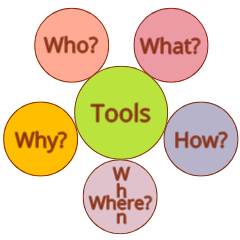Dialog/Educate tactfully
Educate tactfully
Wherein V and R recognize that education involves ongoing interaction between a person and her world, often other persons exerting strong influence, but that influence will best bear fruit as the recipient welcomes it into her inner life, encouraged by the tact and nuance of the interaction.
V 1 — I thought I was catching on, turning things inside out with everyone a student and everyone continuously making decisions for theselves. But the injunction,"Educate tactfully," seems to put the teacher back in charge.
R 2 — Ha! Yes and no! At its root, educate means to draw out, not as one pulls thread out from a spool, but as persons interactively draw each other out in the course of conversation. In this sense, we might restate the injunction, educate tactfully simply to say converse tactfully. Who's in charge? Each person is ultimately in charge of taking what she will for herself from the interaction, both teacher and student are in charge of themselves. In conversing, both teacher and student are drawing themselves out through the interaction and will do so best by doing it tactfully, a difficult art.[1]. Among many other things pedagogical, teachers educate themselves in conversing with their students and students educate themselves in conversing with their teachers.
V 3 — Come on. How's that to happen in most situations that are highly conventional, stereotypical, especially in formal education with everyone acting out well scripted behaviors?
Montaigne's tactful tutor
I happened by remarkable good fortune to come in contact with a tutor who was an understanding man, who knew enough to connive cleverly at this frivolity of mine and others like it. For by this means I went right through Virgil's Aeneid, and then Terence, and then Plautus, and some Italian comedies, always lured on by the pleasantness of the subject. If he had been foolish enough to break me of this habit, I think I should have got nothing out of school but a hatred of books, as do nearly all of our noblemen. He went about it cleverly. Pretending to see nothing, he whetted my appetite, letting me gorge myself with these books only in secret, and gently keeping me at my work on the regular studies.[2]
R 4 — Well, even in highly scripted interactions, significant interstices can arise — a pause, a faint smile or raised eyebrow, and opportunities to let things pass unnoticed or lightly abetted, the very stuff of tact Michel de Montaigne celebrated it when he recalled his own strict training at the Collège de Guienne. But you are right, the modern world cues behavior at every opportunity. Are laugh tracks going out of style or are they becoming obsolete, audiences well primed without them? Yet I think tactful educating need not depend on interstitial time and space.
V 5 — How's that? With so much scripted behavior, what's left?
R 6 — Well, to start with an example, I like to drive and most of the time I'm outwardly dealing with highly scripted behaviors — my own and those of other drivers. But that occupies only a small part of the mind and it leaves a lot of other space open. Many people occupy it by listening to recordings or conversing with a passenger. I do that sometimes, of course, but I often like to turn inward and let my interior discourse flow. Outward behaviors at times intrude — traffic, another driver going off script. That may halt or turn the flow of inner life this way or that for a bit, but the inner life keeps on going and has meaning, often for formative matters. Now, more generally, I think as outward behavior becomes more and more scripted, routinized, the inner life potentially expands and gains import. In the current ethos, we unnecessarily deprecate and ignore the inner life, sticking laugh tracks everywhere — "Just do it! Don't think." We can and should do just the opposite. To me "Educate tactfully" commends us to take the inner life seriously, our own and that of other persons.
V 7 — I guess, then, in urging ourselves to educate tactfully, we will be working to cultivate The Inner Life, Its Care and Significance.
R 8 — Right on — let's try it.
- ↑ With a "ready and delicate sense of what is fitting and proper in dealing with others, so as to avoid giving offence, or win good will; skill or judgement in dealing with men or negotiating difficult or delicate situations; the faculty of saying or doing the right thing at the right time." OED online, "Tact, n. 2."
- ↑ Michel de Montaigne, "Of the Education of Children," in The Complete Works (Donald M. Frame, trans., New York: Knopf, Everyman's Library, 2003) p.158.




